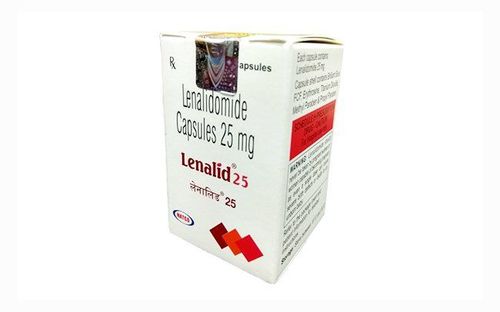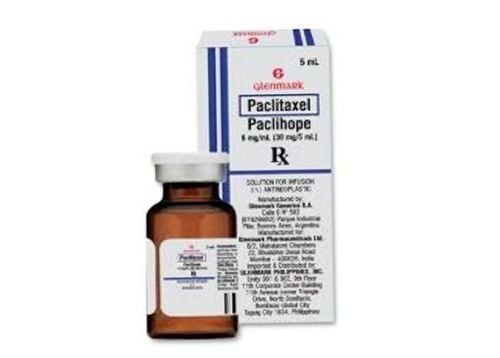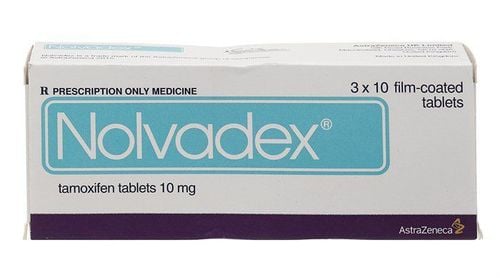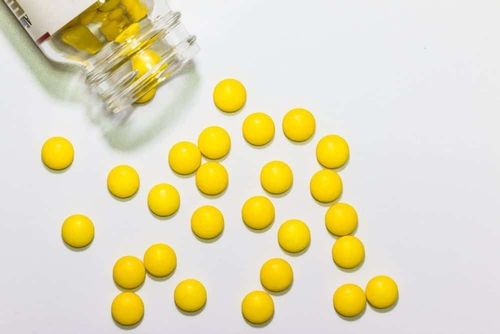This is an automatically translated article.
Esolat is a drug indicated in the treatment of many different types of cancer. This drug is only used under the direction and supervision of experienced doctors, patients absolutely do not buy and use it on their own.
1. Uses of Esolat
Esolat 20 has the main ingredient Docetaxel 20mg and Esolat 80 has Docetaxel 80mg as the main ingredient, which is made in the form of an injection solution.
Docetaxel is an antimitotic taxane derivative that acts specifically on the M phase of cancer cell division.
Therefore, Docetaxel is used therapeutically as a cytostatic antineoplastic agent.
2. Indications and contraindications of Esolat
Esolat is used in the following cases:
Cancer has spread to the breast, lung, head and neck, prostate, stomach, ovary, cervix; Metastatic cancer of the breast, lung, head and neck, prostate, stomach, ovary, cervix; Cancer of unknown origin. Do not use Esolat when:
The patient is allergic to Docetaxel or to any of its ingredients; Neutrophils < 1500/mm3; Severe liver failure; Women who are pregnant or breastfeeding; Do not use Esolat when bilirubin is above the upper limit of normal.
3. Dosage and how to use Esolat
How to use:
Esolat is only used intravenously. The infusion time is usually 1 hour and may be faster if the patient does not have a reaction to the first infusion. Do not give infusions for too long (6 - 24 hours) or in close proximity (eg, 5 days apart). Care must be taken while mixing medicine such as wearing masks and gloves. If the drug gets on the skin or mucous membranes, it should be washed immediately with soap and water. Only take the vial out of the refrigerator 5 minutes before dilution. After dilution, medical personnel should carefully observe for precipitation or discoloration. If the vial is cloudy or has a precipitate, it must be discarded. Dosage often varies depending on the specific condition of the patient and when used may require a combination of other drugs.
The recommended infusion dose is: 100mg/m2 IV over 1 hour. Before infusion 1 day, should use Dexamethasone 8mg x 2 times/day x 3-5 days. If the neutrophil count is decreased with fever or the neutrophil count is < 500/mm3 for more than 1 week or the patient has severe peripheral neuropathy, reduce the dose to 75mg/m2. If the above reactions persist, it may be necessary to reduce to 55 mg/m2 or discontinue treatment. Hepatic impairment: When the patient has liver failure, the dose should be reduced.
Renal impairment: Because the drug is not eliminated by the kidneys much, it is not necessary to reduce the dose.
Overdose:
Signs of Docetaxel overdose are also common signs of adverse reactions, including bone marrow suppression, peripheral neurotoxicity and mucositis, among others. Treatment: There is no specific antidote to treat Docetaxel overdose. Need to be detected early and conduct monitoring, symptomatic treatment.
4. What are the side effects of Esolat?
When taking the drug you may encounter the following side effects:
Common side effects:
Water retention with weight gain, edema; dizziness, sensory disturbances, movement disorders. Hair loss, nail, skin and/or subcutaneous tissue changes, itching, rash. Fever, stomatitis, diarrhea, nausea, vomiting; Neutropenia/leukopenia causes anemia, thrombocytopenia, and increased transaminases. Fatigue, pain, weakness, muscle weakness in the extremities, chest tightness, shortness of breath, increased risk of infection, hypersensitivity. Taste disturbance, increased bilirubin index, increased alkaline phosphatase; Injection site reactions such as hyperpigmentation, inflammation, redness, dry skin, phlebitis, extravasation, venous swelling. Athritis. Uncommon side effects:
Acute myeloid leukemia, disseminated intravascular coagulation causing embolism; myelodysplasia syndrome ; Arrhythmia, atrial fibrillation, atrial flutter, causing atrioventricular block; pericardial effusion, angina, increased heart rate, heart failure, myocardial infarction, myocardial ischemia. Hypertension, syncope, absence of consciousness. Seizures, confusion, colitis, duodenal ulcer, constipation, intestinal obstruction, intestinal perforation, gastrointestinal bleeding, esophagitis. Shortness of breath, acute respiratory failure, pleural effusion, causing pulmonary fibrosis, bronchospasm, interstitial pneumonia, possibly pulmonary embolism. Erythema multiforme, toxic epidermal necrolysis, Stevens-Johnson syndrome, renal failure, hearing loss. Poisoning, causing conjunctivitis, lacrimation, lacrimal duct obstruction, transient visual dysfunction. Hepatitis, ascites; Anaphylaxis, bleeding, sepsis, multi-organ failure. Rare:
Varicose veins of the neck; pounding or irregular heartbeat; Uneven breathing, anxiety, pounding in the ears. Agitation, mental changes, loss of consciousness. If you notice any side effects while taking the medicine, you should tell your doctor for advice and prompt treatment.
5. Notes when using Esolat
When taking drugs, patients must regularly and periodically complete blood tests, liver function tests, bilirubin, alkaline phosphatase and periodically monitor kidney function. Serious abnormalities such as hypersensitivity, sensory disturbances, gastrointestinal toxicity, gastrointestinal bleeding, skin reactions, fluid retention, lacrimation, and narrowing of the lacrimal duct should be monitored. When taking the drug, the patient should drink more water, unless otherwise directed by the doctor. Do not use Esolat for pregnant women. For women of childbearing age, contraception should be used during therapy and effective contraception should be continued for at least 3 months after the end of therapy. Drug interactions: When used in combination with drugs metabolized by cytochrome P450-3A4. May cause drug interactions. In addition, the patient should not take any other drugs while using Esolat. If you are taking any medication, tell your doctor. In summary, Esolat is an antineoplastic agent to be used only under the direction of a physician experienced in the treatment. During cancer treatment with Esolat, you need to be monitored for unusual signs that occur.













